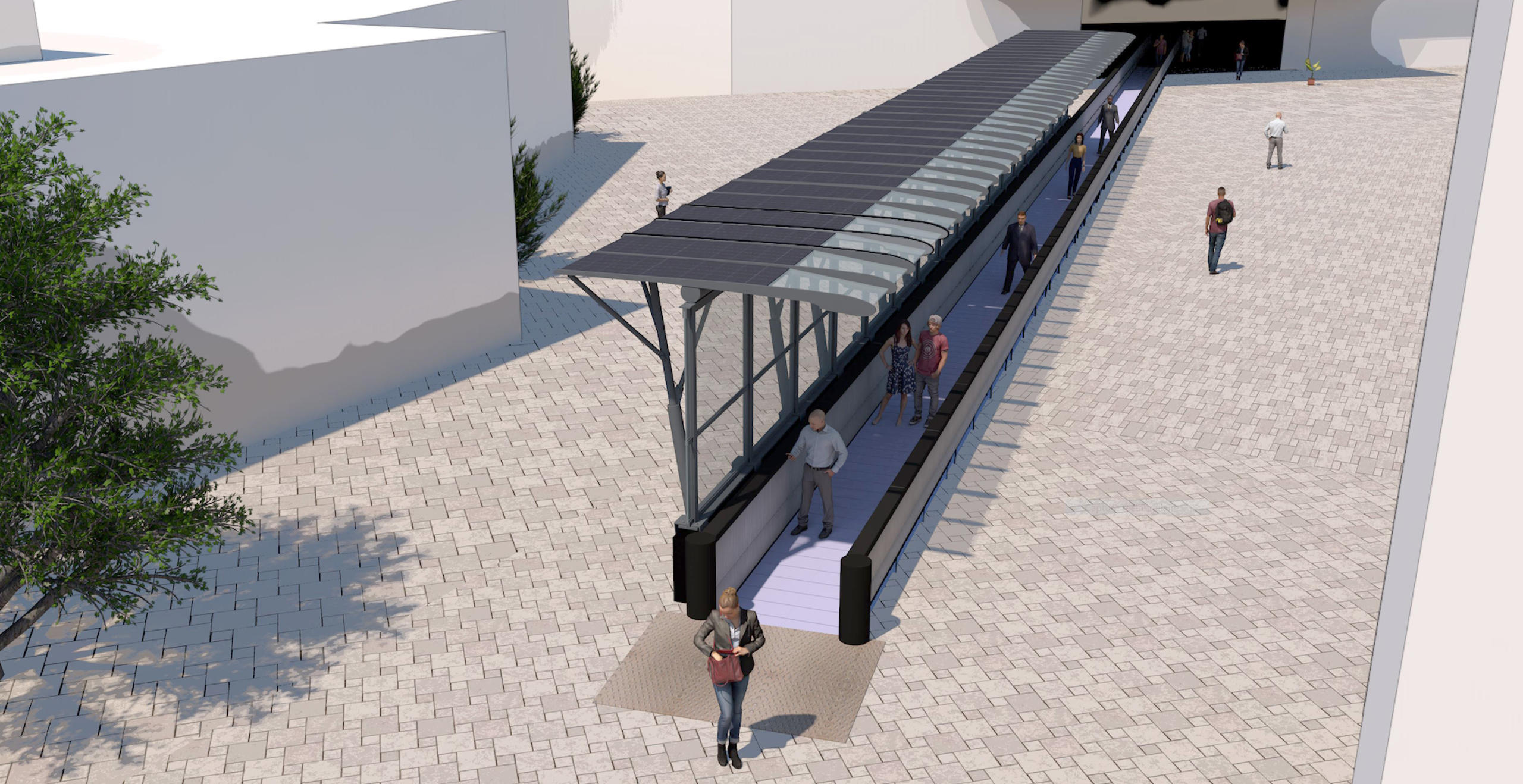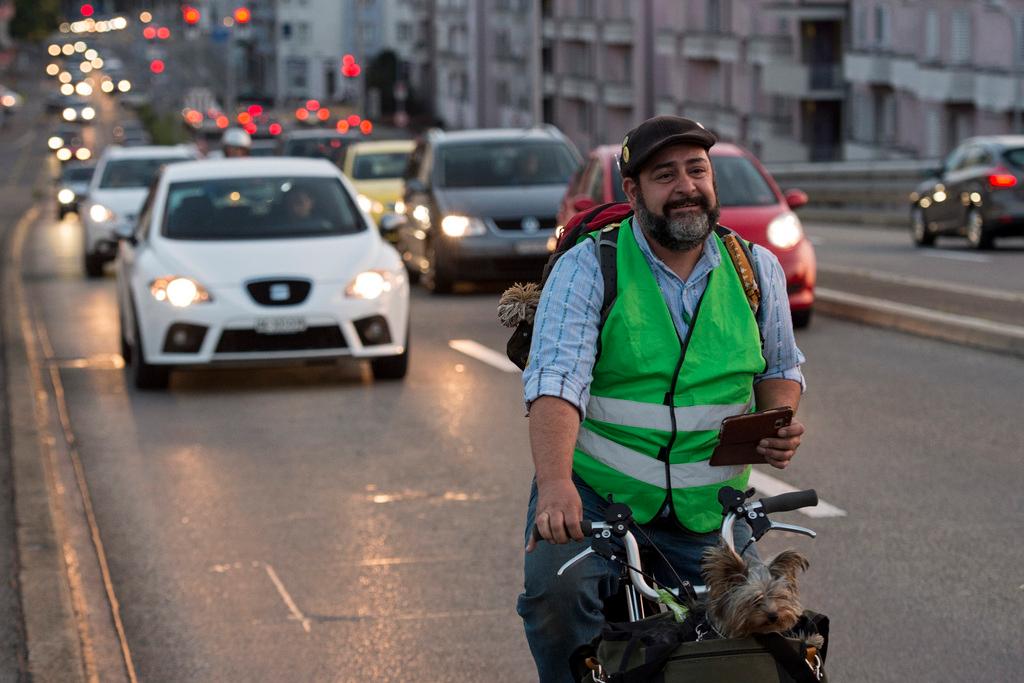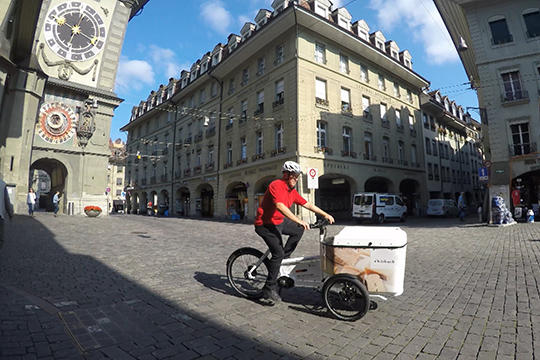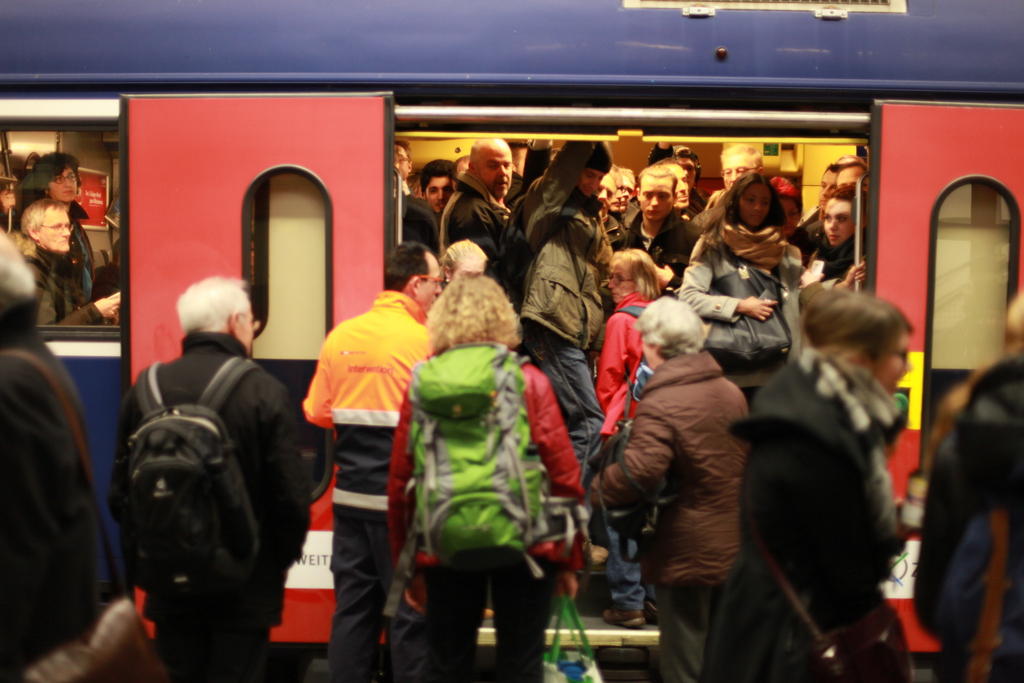Imagining a world without cars

The results of a four-year interdisciplinary research project show that despite their love of driving, the Swiss are open to the idea of replacing private motor vehicles with other options like public transport, telecommuting – or even moving sidewalks.
The results of the PostCarWorldExternal link research project, funded by the Swiss National Science Foundation, were presented at the Swiss Federal Institute of Technology in Lausanne (EPFL) on Tuesday. The project, driven by researchers in fields ranging from sociology and geography to architecture and engineering, involved questioning some 1,000 interviewees about their attitudes on the future of transportation options in Switzerland.
The questions were designed to see what a world without private cars might look like, as well as how a transition toward one might play out. Interviewees were invited to imagine that their selection of other transport modes came from a place of free choice, as opposed to a situation such as a fuel shortage.
“The advantage of this type of prospective study is that it sheds light on the current situation. In asking Swiss people to imagine a car-free future, we were really aiming to find out more about what’s happening right now and about people’s complex relationship with cars” said Jacques LévyExternal link, a professor of urban planning, in an EPFL statement. Lévy led the study in collaboration with researchers at the Federal Technology Institute ETH Zurich, and the University of Lugano.
Based on the results, the researchers concluded that the role of the car has evolved significantly in recent years for the Swiss, and that life without cars is “much more realistic than it was 20 years ago”, according to Lévy.
Not only are Swiss inhabitants aware of and open to the idea of life without private cars – the researchers also determined that such a model could work from an economic and technological standpoint. Adaptation of infrastructure and increased provision of public transportation services, however, would both require more work – and more funding.
From objects to services
The PostCarWorld project might more accurately have been dubbed PostPrivateCarWorld. Indeed, several of the alternative mobility models studied – such as autonomous buses, carpooling, and carsharing – still make use of motor vehicles. Combinations of these alternatives were also considered.
“One could imagine, for example, neighbouring families sending their children to school in an autonomous bus,” Lévy told attendees of the project exhibition.
The difference, he explained, is the move away from cars as an object of personal property and ownership, and toward a service-oriented, multimodal model of transport that combines public and shared mobility systems; technological solutions such as online shopping, telecommuting and telework; and the classic car alternatives of walking and cycling.
In many of the interviews the researchers conducted, respondents expressed conflicting desires to improve their environmental footprint and save time spent searching for parking and sitting in traffic jams, as well as to preserve the independence and freedom they felt they gained by travelling in a private vehicle.
In short, Lévy told attendees, Swiss people love their cars and hesitate to relinquish the “mythology of freedom” they represent. But as the various research projects showed, interviewees also expressed interest in another kind of freedom: freedom of attachment to objects, and from traffic, noise and pollution.
“That picture-perfect image still used in car ads of a lone driver surrounded by the Grand Canyon resonates less these days… Drivers are expected to have the same reflexes as a machine and be able to absorb a lot of information at the same time. That’s far removed from the pleasure of driving fast and conquering open spaces,” Lévy said in the statement.
The researchers also emphasised how a post-car world would help reduce urban sprawl and re-develop centralised, public urban spaces and pedestrian routes, which in many places have shrunk to accommodate motorised traffic.
Visualising the future
What might a post car world actually look like? For EPFL postdoctoral researcher Riccardo Scarinci, moving walkwaysExternal link would be a key feature of the landscape. Scarinci’s feasibility study on moving walkways, which he presented at Tuesday’s exhibition, was one of the winners of the 2017 European Transport Innovation ChallengeExternal link.
By creating an algorithm to optimise pedestrian transportation efficiency and minimise costs, Scarinci showed that a network of public walkways, designed to move pedestrians along at 15 kilometres per hour, could compete easily with cars stagnating in rush hour traffic. As in an airport, the walkways would move slowly, at just one kilometre per hour at either end, and accelerate in the middle to maximise both safety and efficiency, and minimise congestion.
Such a walkway, Scarinci calculated, could move 7,000 passengers per hour, versus a roadway, which can only accommodate between 750 and 1,800 vehicles. A network of compact walkways, Scarinci told the audience, could also save space, leaving much more room for bikes, pedestrians, and other modes of transport.
Quick facts: cars in Switzerland
- According to the Swiss Federal Statistics OfficeExternal link, the number of road vehicles in the country – around 75% of which are passenger cars – has more than doubled since 1980.
- In 2015, there were more than 4.4 million cars in Switzerland. That year, the car was the most importantExternal link means of transport, with 10,371 kilometres travelled by car per person. Air travel came in second with 8,986 km.
- In 2016, there were 0.53 cars per Swiss inhabitant, on average. But between 2007 and 2015, the number of cars per person in the largest Swiss cities dropped by a sixth, to 0.36.
- In Switzerland, as of 2015, 78% of householdsExternal link owned a car and 82% of the adult population held a driver’s license.
Mobility costs in Switzerland
In 2013, expenditures on motorised road transport climbed to CHF75 billion, dwarfing rail expenditures of CHF10.5 billion, according to a report published at the end of September by the Swiss Federal Statistics OfficeExternal link. Three-quarters of the total CHF84.8 billion in transport costs came from passenger transport, while one-quarter of costs was incurred by transport of goods.
In 2014, the Swiss Confederation, cantons and communes spent CHF16.5 billion in public funds on road and rail transport. About 54% of total expenditures were financed by the federal government, with 21% and 25% being assumed by the cantons and communes, respectively.

In compliance with the JTI standards
More: SWI swissinfo.ch certified by the Journalism Trust Initiative















You can find an overview of ongoing debates with our journalists here . Please join us!
If you want to start a conversation about a topic raised in this article or want to report factual errors, email us at english@swissinfo.ch.